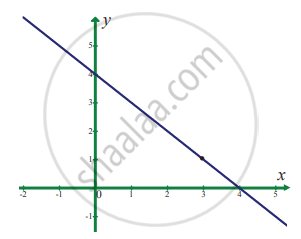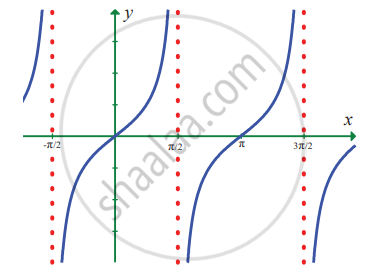Advertisements
Advertisements
प्रश्न
Evaluate the following limits:
`lim_(x -> 0) (sqrt(1 + sinx) - sqrt(1 - sinx))/tanx`
उत्तर
`lim_(x -> 0) (sqrt(1 + sinx) - sqrt(1 - sinx))/tanx = lim_(x -> 0) ((sqrt(1 + sinx) sqrt(1 - sinx))(sqrt(1 + sinx) + sqrt(1 - sinx)))/(tanx(sqrt(1 - sinx) + sqrt(1 - sinx))`
= `lim_(x -> 0) ((1 + sinx) - (1 -sinx))/(sinx/cosx (sqrt(1 + sinx) + sqrt(1 - sin))`
= `lim_(x -> 0) (cosx[1 + sinx - 1 + sinx])/(sinx(sqrt(1 + sinx) + sqrt(1 - sinx))`
= `lim_(x -> 0) (cosx xx 2sinx)/(sinx(sqrt(1 + sinx) + sqrt(1 - sinx))`
= `2 lim_(x -> 0) cosx/((sqrt(1 + sinx) + sqrt(1 - sinx))`
= `2 x (cos 0)/((sqrt(1 + sin0) + sqrt(1 - sin))`
= `(2 xx 1)/((sqrt(1 + 0) + sqrt(1 - 0))`
= `2/(1 +1)`
= `2/2`
`lim_(x -> 0) (sqrt(1 + sinx) - sqrt(1 - sinx))/tanx` = 1
APPEARS IN
संबंधित प्रश्न
In the following example, given ∈ > 0, find a δ > 0 such that whenever, |x – a| < δ, we must have |f(x) – l| < ∈.
`lim_(x -> 2)(2x + 3)` = 7
In the following example, given ∈ > 0, find a δ > 0 such that whenever, |x – a| < δ, we must have |f(x) – l| < ∈.
`lim_(x -> 1) (x^2 + x + 1)` = 3
In problems 1 – 6, using the table estimate the value of the limit
`lim_(x -> 0) (cos x - 1)/x`
| x | – 0.1 | – 0.01 | – 0.001 | 0.0001 | 0.01 | 0.1 |
| f(x) | 0.04995 | 0.0049999 | 0.0004999 | – 0.0004999 | – 0.004999 | – 0.04995 |
In exercise problems 7 – 15, use the graph to find the limits (if it exists). If the limit does not exist, explain why?
`lim_(x -> 3) (4 - x)`
In exercise problems 7 – 15, use the graph to find the limits (if it exists). If the limit does not exist, explain why?
`lim_(x -> x/2) tan x`
Sketch the graph of a function f that satisfies the given value:
f(– 2) = 0
f(2) = 0
`lim_(x -> 2) f(x)` = 0
`lim_(x -> 2) f(x)` does not exist.
Evaluate the following limits:
`lim_(x -> 5) (sqrt(x + 4) - 3)/(x - 5)`
Show that `lim_("n" -> oo) (1 + 2 + 3 + ... + "n")/(3"n"^2 + 7n" + 2) = 1/6`
Evaluate the following limits:
`lim_(x -> oo) ((2x^2 + 3)/(2x^2 + 5))^(8x^2 + 3)`
Evaluate the following limits:
`lim_(x -> 0) (sin^3(x/2))/x^2`
Evaluate the following limits:
`lim_(x -> 0) (sinalphax)/(sinbetax)`
Evaluate the following limits:
`lim_(alpha -> 0) (sin(alpha^"n"))/(sin alpha)^"m"`
Evaluate the following limits:
`lim_(x -> 0) (tan 2x)/x`
Evaluate the following limits:
`lim_(x -> 0) (2^x - 3^x)/x`
Evaluate the following limits:
`lim_(x -> oo) x [3^(1/x) + 1 - cos(1/x) - "e"^(1/x)]`
Evaluate the following limits:
`lim_(x -> 0) (sqrt(2) - sqrt(1 + cosx))/(sin^2x)`
Choose the correct alternative:
`lim_(x - pi/2) (2x - pi)/cos x`
Choose the correct alternative:
`lim_(x - oo) sqrt(x^2 - 1)/(2x + 1)` =
`lim_(x -> 0) ((2 + x)^5 - 2)/((2 + x)^3 - 2)` = ______.
The value of `lim_(x→0)(sin(ℓn e^x))^2/((e^(tan^2x) - 1))` is ______.
